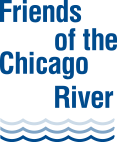Herps and Bugs

Painted turtles are often seen basking on logs in the river.
Many of the animals that live in the river's riparian buffer are harder to find. Water quality is essential to sustain animals that rely on aquatic habitats for food and reproduction. Many animals spend their whole lives in the river, or within the riparian buffer under rocks and underground. When you walk along the river, keep your eyes open. The variety and location of wildlife can be surprising.
Please email your wildlife questions, stories, or images to wildlife@chicagoriver.org.
Learn about Friends' projects to create habitat for turtles.
Click on a type of animal to jump to that section.
1. Reptiles and Amphibians
2. Macroinvertebrates
3. Insects and Arachnids
Amphibians and reptiles (collectively known as herps) may occupy similar habitats and can be found in most habitat types. Some species use different habitats at different times of the year. Some turtles, for example, spend most of their time in the water, but must move to land to lay eggs.
Amphibians and reptiles are both important members of aquatic and terrestrial ecosystems. Both groups serve as both predators and prey, and species that inhabit both ecosystems serve to transfer energy between the two systems.
Both reptiles and amphibians cannot regulate their own body temperatures internally as mammals and birds do. They each have ways to stay warm such as basking in the sun, and by hibernating underground or burrowing into the mud to survive the winter.

A tiger salamander has spots to camouflage itself against the forest floor.
Reptiles and Amphibians
The Illinois Natural History Survey has a comprehensive guide for Illinois reptiles and amphibians. These shy creatures are seldom seen, but almost always there. Listen for frogs calling in the spring. Some common reptiles and amphibians are highlighted below.




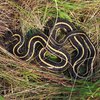
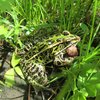
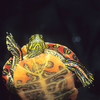

- American toad (Anaxyrus americanus)
- Blue-spotted salamander (Ambystoma laterale)
- Bullfrog (Rana catesbeiana)
- Common garter snake (Thamnophis sirtalis)
- Common snapping turtle (Chelydra serpentina)
- Northern leopard frog (Rana pipiens)
- Painted turtle (Chrysemys picta)
- Pond "Red-eared" slider (Trachemys scripta)
Other resources:
- Ecology of the Chicago Region: Amphibians and Reptiles
- Common Frogs and Toads of the Chicago Region
- Amphibians and Reptiles of the Calumet Region
- River Life Stories: Blanding's turtle, common garter snake, common snapping turtle, Massasauga rattlesnake, and northern green frog.

Some macros spend their whole life cycle in the river. Others emerge to live nearby.
Macroinvertebrates
Macroinvertebrates are animals without a backbone that are large enough to see with the naked eye. In the river, they include animals from such varied groups as insects, crustaceans, worms, and mollusks. As well as comprising an important part of the aquatic food web, macroinvertebrates are also key bioindicators of water quality. Some macroinvertebrates are highlighted below.
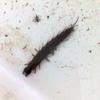




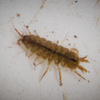
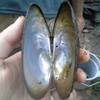

- Insects (larvae): Caddisfies, Dobsonflies, Stoneflies, Craneflies, Damselflies and Dragonflies
- Insects (adults): Waterboatman and Water striders
- Crustaceans: Crayfish, Scuds and Sowbugs
- Mollusks: Snails, Mussels and Clams
- Worms: Leeches and Planaria
Other resources:
- Ecology of the Chicago Region: Macroinvertebrates
- Macroinvertebrates of the Chicago River
- Macroinvertebrate Fact Sheet
- Key to Macroinvertebrate Life in the River
- Macroinvertebrate Identification Key - Illinois RiverWatch
- A Selection of Aquatic Macroinvertebrates of Illinois
- Freshwater Mussels of the Upper Mississippi River
- River Life Stories: freshwater sponge and virile crayfish

A tiger swallowtail butterfly sips nectar from a Canada thistle.
Insects and Arachnids
Calling something a "bug" usually implies a pest or disease carrier, like a mosquito or tick. Many insects like bees, butterflies, moths, and beetles are beneficial to humans; they pollinate plants, produce useful substances, control pest insects, act as scavengers, and serve as food for other animals.
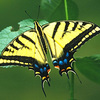





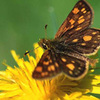

- Ecology of the Chicago Region: Insects
- Common Butterflies of the Chicago Region
- More Common Butterflies of the Chicago Region
- River Life Stories: emerald darner dragonfly and monarch butterfly
- Tick Fact Sheet
Go to:
